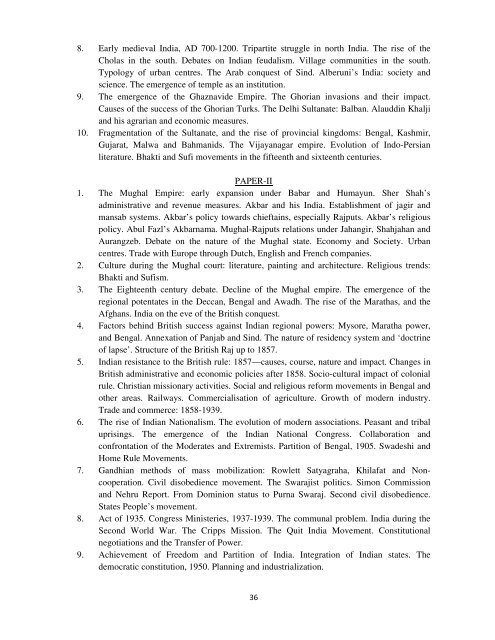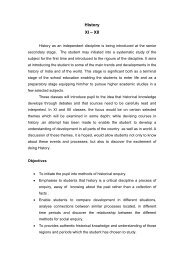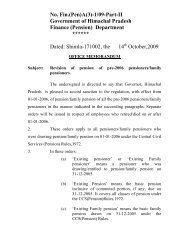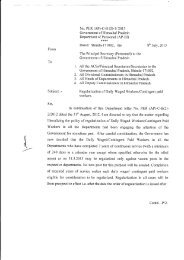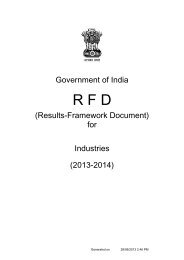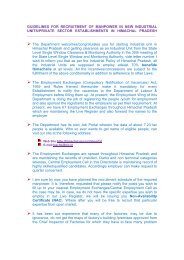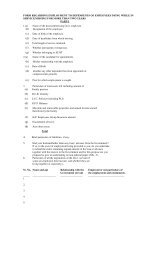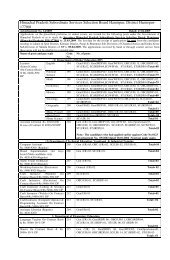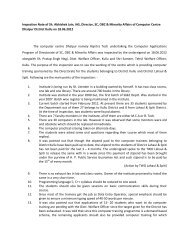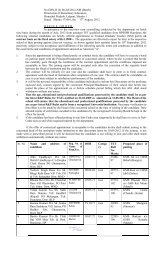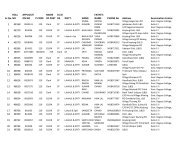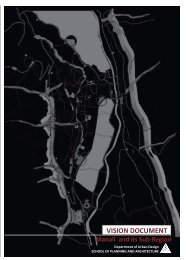Hindi - Himachal Pradesh
Hindi - Himachal Pradesh
Hindi - Himachal Pradesh
Create successful ePaper yourself
Turn your PDF publications into a flip-book with our unique Google optimized e-Paper software.
8. Early medieval India, AD 700-1200. Tripartite struggle in north India. The rise of theCholas in the south. Debates on Indian feudalism. Village communities in the south.Typology of urban centres. The Arab conquest of Sind. Alberuni’s India: society andscience. The emergence of temple as an institution.9. The emergence of the Ghaznavide Empire. The Ghorian invasions and their impact.Causes of the success of the Ghorian Turks. The Delhi Sultanate: Balban. Alauddin Khaljiand his agrarian and economic measures.10. Fragmentation of the Sultanate, and the rise of provincial kingdoms: Bengal, Kashmir,Gujarat, Malwa and Bahmanids. The Vijayanagar empire. Evolution of Indo-Persianliterature. Bhakti and Sufi movements in the fifteenth and sixteenth centuries.PAPER-II1. The Mughal Empire: early expansion under Babar and Humayun. Sher Shah’sadministrative and revenue measures. Akbar and his India. Establishment of jagir andmansab systems. Akbar’s policy towards chieftains, especially Rajputs. Akbar’s religiouspolicy. Abul Fazl’s Akbarnama. Mughal-Rajputs relations under Jahangir, Shahjahan andAurangzeb. Debate on the nature of the Mughal state. Economy and Society. Urbancentres. Trade with Europe through Dutch, English and French companies.2. Culture during the Mughal court: literature, painting and architecture. Religious trends:Bhakti and Sufism.3. The Eighteenth century debate. Decline of the Mughal empire. The emergence of theregional potentates in the Deccan, Bengal and Awadh. The rise of the Marathas, and theAfghans. India on the eve of the British conquest.4. Factors behind British success against Indian regional powers: Mysore, Maratha power,and Bengal. Annexation of Panjab and Sind. The nature of residency system and ‘doctrineof lapse’. Structure of the British Raj up to 1857.5. Indian resistance to the British rule: 1857—causes, course, nature and impact. Changes inBritish administrative and economic policies after 1858. Socio-cultural impact of colonialrule. Christian missionary activities. Social and religious reform movements in Bengal andother areas. Railways. Commercialisation of agriculture. Growth of modern industry.Trade and commerce: 1858-1939.6. The rise of Indian Nationalism. The evolution of modern associations. Peasant and tribaluprisings. The emergence of the Indian National Congress. Collaboration andconfrontation of the Moderates and Extremists. Partition of Bengal, 1905. Swadeshi andHome Rule Movements.7. Gandhian methods of mass mobilization: Rowlett Satyagraha, Khilafat and Noncooperation.Civil disobedience movement. The Swarajist politics. Simon Commissionand Nehru Report. From Dominion status to Purna Swaraj. Second civil disobedience.States People’s movement.8. Act of 1935. Congress Ministeries, 1937-1939. The communal problem. India during theSecond World War. The Cripps Mission. The Quit India Movement. Constitutionalnegotiations and the Transfer of Power.9. Achievement of Freedom and Partition of India. Integration of Indian states. Thedemocratic constitution, 1950. Planning and industrialization.


